I’m in Kyushu, the third largest and the southernmost of Japan’s four main islands, drawn, by an extraordinary annual natural event, to a rather off-the-beaten-path destination, but with my eyes wide open for other experiences. More particularly, I am in Kagoshima Prefecture, the southernmost of the island’s seven prefectures. Coming from my home in boreal Hokkaido, Japan’s northern island, Kagoshima seems positively lush, almost sub-tropical. Palm trees, cycads, and camellias in bloom all greet me just outside Kagoshima Airport. During my first journey by bus, I pass fields with lines of neatly shaped tea bushes, and see citrus trees and persimmon trees laden with fruit — a very far cry from the snow and ice coating leafless deciduous trees and evergreen conifers in east Hokkaido!
Kyushu literally means nine provinces. So, given that today the island is divided into just seven prefectures there is clearly a lengthy history for me to investigate, but that is a topic for another day.
As my bus winds its way north-westwards towards my destination, the city of Izumi, and as I ponder on the mysterious mismatch between seven prefectures and nine provinces, I cannot help but remember my first journeys this way. Then, almost 40 years ago, I was an impoverished post-grad and had travelled by ferry and by hitch-hiking through what was to me a completely unfamiliar landscape of narrow valleys with tiny rice fields and steep hillsides clad in forest, bamboo and forestry plantation. That was back in February and December 1982, when I was filled with a young man’s aspirations. Now, it is winter 2021 and I find myself, decades later, here again in a now more familiar landscape, but seeing it all afresh and learning more about Izumi than I thought possible.
Izumi, for the uninitiated, is a birding Mecca. Birdwatcher’s from around the world make winter pilgrimages to this area of Kyushu, drawn by one of the largest gatherings of birds in Japan — the wintering hordes of Hooded Crane and White-naped Crane. Yet, as I was to learn, there is so much more to Izumi than just the cranes — from samurai history to Shinto shrines, from farmer’s markets to fine dining, from highly decorative drain covers to citrus farms — that it is well worth spending an extra day or two to discover aspects of the city and its local culture.
Izumi: A Renowned Place for Observing Japan’s Cranes
Since the 17th century, and until the mid 20th century, land has been reclaimed generation-by-generation from the southern part of Izumi Bay, creating enormous areas of low-lying fertile farmland, much of which today produces rice and vegetables. The observant may even notice remnants of the old sea walls. In winter, the fallow fields are home to one of the most spectacular wildlife sights you can hope for in Japan.
Literally, thousands of stately cranes of up to five species gather here to feed and sleep in safety during the winter months. They remain until the lengthening days in late winter and early spring urge them to migrate back north to their breeding territories in northeast Asia. Their annual journey from Russia via northeast China and the Korean Peninsula is no easy feat. In autumn, the young cranes fly south with their parents to Kyushu, learning the route and the safe places to rest and forage along the way. They have one more chance to cement that learning during the family’s spring northbound migration. Thereafter, they must find their own way in the world, find their own partner, raise their own families, and teach their own young the way. Each winter watchers in Kyushu await their return, counting the families that have succeeded. This winter I am, again, one of those watchers drawn to Izumi.
Arasaki
Known to birdwatchers worldwide as Arasaki, the reclaimed land west of the broad Iwashita River, where the Takaono and Noda rivers merge, is the first place to head. There, the Crane Observation Centre, which is a mere eight kilometres or so from Izumi Station, overlooks the fields of Arasaki that play host to the larger part of the crane gathering. On a dark December morning, cool but without wind, I climb the steps outside the centre to reach the rooftop. The rooftop viewing deck above the surrounding farmland provides the very best vantage point from which to watch the cranes in the early morning.
On this particular morning, the sky is mostly clear, dawn has arrived and the sight below me to the north in the morning half-light seems to take in a vast army. Ranks of cranes in grey and white ‘uniforms’ are on the move. I enjoy hearing their bugling cries filling the air, making this as much an emotional soundscape as a tremendous sight. I feel as if I am looking across a massive sports arena filled with an eager and vociferous crowd. Soon the first cranes take off, at first in threes and fours, but soon flocks and Vs fill the air in a noisy rush of wings as they set off for, what is for them, a typical crane’s winter day in Kushu. This dawn departure is spectacular and the greatest highlight of my visit to Izumi, I can’t resist repeating it each morning.
A Day in the Life of a Crane on the Izumi Plain
All night the cranes stand at roost, one leg tucked into their belly feathers, neck and head looped and draped over their back between their folded wings. Waking occasionally to peer around and call, they pass the nighttime hours. Before the first glimmer of dawn their calling escalates and, as the day’s first light reaches the flooded rice fields in which they stand, the first individuals, pairs and families stretch awake then take off. At some time within an hour of dawn, their exodus occurs. On some days they march out from the roost like an invading army, on some days they burst into massed flight, but on most mornings they leave in a steadily increasing stream of families and flocks. They will spend their winter day foraging, gleaning spilt rice after the harvest, or feasting on food put out specially for them. Even within the flocks the family units are most conspicuous, each pair alone, or with a single chick or, if they were supremely successful, two. Cranes habitually lay two eggs, but frequently lose one or both eggs or chicks to predators on their breeding grounds. Parent cranes are vigilant, taking turns to stand watch over their youngsters as they feed. While some forage within a kilometre or so of the roost site, some will fly out ten kilometres or more to find quiet, undisturbed fields away from the crowds.
The day passes mostly in feeding, then as the afternoon light wanes the cranes return once more to their roost site; families and flocks build up in numbers as the light fades, until wave after wave of calling birds homes in on the roost from west, south, and east. Long after they have settled amongst the throng again, their calls continue into the night.
The Cranes of Izumi and Where to Watch Them
On 18 November 2021, in a major accolade for Izumi City, the wintering habitat of cranes at Izumi was designated as a Wetland of International Importance under the international Ramsar Convention. The crane flock here consists almost entirely of two species. The diminutive Hooded Crane, standing 90–100 cm tall with a wingspan of 160–180 cm, outnumbers all of the others, its numbers now close to 15,000. The elegant White-naped Crane, standing 120–153 cm tall, with a wingspan of 200–210 cm is common too, but numbers just 1,500–2,000 birds. For the keen and sharp-eyed birder there are several needles in this enormous avian haystack to look out for. Each winter several Sandhill Cranes join the throng, as do several Common Cranes. Most Sandhill Cranes winter in North America, but a few that breed in far northeastern Russia mix in with Asia’s migratory cranes and reach Izumi each winter. Despite the name, the Common Crane is a rarity here (Common applies to its status in its native European and West Asian range), but those armed with patience may spot one or more of them amongst the masses. On my very first visit in 1982, I was fortunate to see a single Demoiselle Crane. A rarity in Japan, the dainty demoiselle comes from Central Asia. This winter, an exceedingly rare and stately Siberian Crane was visiting and I was delighted to find it very prominent within the flock. Even more rarely, once every few decades, individual Hooded Cranes have reached the area, no doubt from their small and declining continental population. That for me is the familiar crane of Japan as it thrives and breeds in east Hokkaido where I live.
The Crane Observation Centre, set on land reclaimed between 1860 and 1866, is the place to start spending a day with cranes. According to Ouchiyama-san of Izumi City, who I met on the rooftop of the observation centre (he is a local bird guide now that he has retired), there are nearly 17,000 cranes this winter. The signboard I saw later in front of the centre confirmed that during the census on 4 December 2021, 16,706 cranes had been counted, a staggering 15,145 Hooded Cranes, 1,546 White-naped Cranes, with as many as eight Common, four Sandhill and the Siberian in residence. When I first visited in 1982, there were a mere 5,000 or so cranes in total. What an amazing increase has taken place over the intervening 40 years — there is yet another fascinating conservation story waiting to be told.
The first hour of light sees thousands of birds taking to the air, and the cacophony of sound is unbelievable. Many of them will fly eastwards across the river to the area of reclaimed land there known as Higashi Kantaku, another renowned area for crane watchers (it was ‘reclaimed’ between 1953 and 1965). Just two kilometres away as the crane flies, this area also offers safe roosting and feeding for the cranes. A small roadside hut is where crane wardens, crane watchers, and crane photographers gather to revel in the birds present and to exchange ‘intelligence’ about other birds elsewhere. These two spots and the various roads between them provide endless distractions in the form of cranes and their behaviour, and other wintering birds.
On one dark morning at Higashi Kantaku, I waited, listening to the sound of cranes. Overhead, I enjoyed sparkling stars, saw Venus, Saturn, and Jupiter aligned almost completely with the sinking moon and could just make out the ridge of hills to the east, all the while listening to the predawn bugling of the cranes. As the sky became paler, I began to distinguish the dense mass of cranes at the roost, and was thrilled by the scene of cranes with mist rising around them into the cold air. By the time it became fully light the cranes were already marching out across the flooded roost field, onto the fields beyond and the first groups of cranes were taking off. What a magnificent sight it was.
Understanding Crane Behaviour
The wintering crane flock includes individual adults intent on finding a mate for the breeding season ahead, pairs that have not yet reared young intent on rekindling their pair bond, and parents guarding their single or twin youngsters. It is hardly surprising then, that when they are not busy feeding they are very busy interacting. Individuals approaching too closely to a foraging family can expect to be bullied away by irate parents, in lunging attacks with their bills. Young cranes are readily distinguished in winter by brown feathering on their necks and heads and by their general lack of concern for everything around them except their parents — and food.
Tall males attempt to attract smaller females with their powerful calls combined with ‘come hither’ posturing. The White-naped Cranes are by far the most demonstrative. Their displays are brief, yet delightful. Their subtly-shaded plumage in greys and whites is shown off at its best as they sky-point with their bills and flick their half-folded wings up and over their backs, their chic long white tertial feathers drooping down over their tail feathers and catching the breeze. As the pairs posture they call in a distinctive duet. Those are the highlight moments to watch and listen for.
As winter wanes, courtship behaviour increases among the newly forming and re-establishing crane pairs. When hints of spring appear, during late February and early March, small, then large flocks begin their northward journey. They have a busy summer breeding season ahead and will not migrate again to Izumi until October or November.
Other Birdwatching in Izumi Beyond Cranes
Winter birdwatching at Izumi is not all about the cranes. The tree tops and telephone wires in the area commonly hold 100s, even 1,000s, of Eastern Rooks. This migratory member of the crow family also arrives to winter in the Izumi area, coming from as yet unknown breeding grounds somewhere on the continent. There may also be White-cheeked Starlings and Russet Sparrows on the wires around the crane centre, while jaunty colourful Daurian Redstarts are often to be found nearby.
The reed beds along the rivers east and west of the crane site harbour many small birds, mostly various buntings, but sometimes crakes and rails. The trees near the northwest corner of Warabi Island (2–3 kilometres northwest of the crane centre) host a busy Grey Heron colony, known as a heronry, to which the breeding birds return in January and February and entertain watchers as they carry sticks back to their previous year’s nests and display atop them.
Approximately eight kilometres southeast of Izumi Station lies Kogawa Dam and reservoir. The mixed evergreen forests surrounding this body of water hold forest birds such Japanese Pygmy Woodpecker, Japanese Tit, Varied Tit and even White-bellied Green Pigeon, while on the reservoir itself in winter, there may be small flocks of waterfowl, often including Eurasian Wigeon, Common Pochard, and the delightfully gaudy Mandarin Duck, the males of which are resplendent in orange, maroon and white, while the more cryptic females wear subtle shades of grey and brown.
A Secret Birdwatching Tip
Many animals are able to move their ears so as to focus on sounds in their environment. They can perk up, turn and twist their ears like mini radar dishes. That, sadly, is something that we humans cannot do. What we lack in mobility of our auricles or pinnae we make up for in manual dexterity. So, while we cannot focus our ears, try this little trick (if you don’t mind looking a little silly). Stand facing the source of the sound, such as the bugling crane flock, cup your hands, one behind each ear, pressing forwards, and slowly turn your head. You will experience a dramatic increase in the perceived sound and enjoy 3D sound exposure. This can be enhanced further (at the risk of looking even sillier) by opening your mouth wide too, offering as much space as possible for sound to be received.
Discovering the History and Culture of Izumi
Taking breaks and breathers from the sights and sounds of cranes, I explored further in Izumi City itself and was delighted to visit several intriguing sites.
Hakozaki Hachiman Jinja
I was entranced to find a shrine in Izumi that combines the usual and expected elements of Shinto-ism (vermilion gates, various small shrine buildings and attractive walkways between them) with an appreciation of cranes and their symbolic and mythological representation of long life. Statues of cranes lined the way between the giant torii gate and the main entrance building of the shrine while taking pride of place were two enormous White-naped Crane statues resplendent in the morning sunlight. Beyond them and hanging proudly in the entrance was a giant bell, which was for me the main attraction of the site. It measures 3.4 m from top to bottom and weighs a staggering 5.0 tons, making it, apparently, Japan’s largest shrine bell. The little museum at the site was closed while I was there, but contains Japan’s smallest shrine bell, which measures a mere 2 mm across. Now that would be something to see — and a reason for me to return one day. Apparently, a magnifying glass is provided!
The giant bell of Hakosaki Hachiman Jinja was cast with raised illustrations of flying cranes adorning it, making it double impressive. Beyond the bell, the site is attractive with numerous maple trees, various evergreens including evergreen oaks, and several Ginkgo trees with golden leaves and golden leaf carpets on the ground beneath them. Inside the shrine compound, further statuary includes more White-naped Cranes and a huge turtle on either side of a tall figure of Takenouchi Sukune. Japanese mythology has it that cranes live for 1,000 years, while turtles live for 10,000. Combined, there is no more potent symbol of long life.
The View from Tōkō-zan
Moving on from the shrine, I wound my way uphill to visit Toko-zan. I found a viewing tower in the little park atop the mountain, offering the best views. This low mountain stands to the east of Izumi City and offers a tremendous panoramic view across the city to Izumi Bay, and the reclaimed land, with the distinctive shape of the Crane Park Museum in the middle distance, and rice fields and the Shinkansen line in the foreground. Coming from the far north and long-flowerless Hokkaido, I particularly enjoyed seeing Sazanka Trees in full bloom in the park despite it being a winter’s day. The park has the inevitable array of Cherry Trees and these apparently blossom during April.
Shinonome no Sato Ajisai Park
About 25 minutes out of central Izumi City, about three kilometres of Route 447, I visited Shinonome no Sato Ajisai Park (東雲の里). This unusual site consists of a hillside planted with numerous hydrangeas and other shrubs, with attractive walkways, a rushing stream, and a charming, characterful coffee shop that also serves three kinds of soba noodle dishes for lunch. The cafe is in an old building with lovely wooden beams and natural earthen plaster walls and a home-made wood burning stove in the centre. The owner is a potter, so the ware used in the coffee shop is all made by him, and next door, another building houses samples of his works for sale.
There were many distractions in the grounds, not least were many delightful, spreading red-leaved bushes. These symmetrical and dome-shaped bushes White Enkianthus were still colourful with their bright scarlet leaves, but in spring they have delicate white, bell-like flowers.
The garden was lovely, with fascinating features, little viewpoints with rustic shelters and even a somewhat traditional tea house. Clearly, it must be at its best for Hydrangeas in June and autumn colours in the final third of November, but my winter walk was an enjoyable exploration on narrow stepping stone paths with a stream and pleasant views down the valley. Even in winter, there are so many attractive features to make a visit worthwhile for coffee, cake, or a soba lunch.
Izumi Bukeyashiki: Samurai Residences
On another cold but sunny morning, I strolled around the Izumi Samurai Residences known as Bukeyashiki, beginning first at the Izumi-Fumoto Historical Museum. This attractive new building contains an interesting diorama of how the quarter looked during its heyday some 200–400 years ago and some historical photographs. Alas, as with many such facilities in Japan, the many panels with images and historical information had only token English, Korean and Chinese. The titles of the panels were translated, but none of the contents — rendering them completely mystical to the non-Japanese reader. One very large wall panel was covered with mysterious dates and text, but the only translation was of the title — the History of Izumi! Meanwhile, another large panel of text had the mysterious line, “Go ahead and open the lid of the bowl!” in English. I left bemused and baffled, not knowing why one should ‘lift the lid’. Was it a historical euphemism, but if so, what for?
Soon outside the baffling museum once more, there was time to stroll around the equally unusual samurai quarter. Instead of building a castle to defend the border of the Satsuma domain from the neighbouring domain of Higo, an ‘outer town’ (or Fumoto) was set up. There, a whole garrison of samurai retainers lived. The houses of the area, some of which supposedly date back to the 17th and 18th centuries, give insight into how cold and draughty samurai houses were in winter, and how hot and humid they must have been in summer. Many of the old houses have been replaced with more modern structures, some have gone completely, leaving only their centuries-old gardens, but others have been preserved and restored. I entered the Satoshi-tei and Takezoe Houses for a closer look at their astonishingly simple interiors; tatami-floored rooms, with paper screens and wooden shutters but soon retreated from the chilling air and shadows inside. I could imagine that samurai were not only tough on the battlefield, but at home as well!
Try Izumi’s Citrus at a Farmer’s Market
With a little time to spare, I was excited to learn more about the fruits grown in Izumi and managed to drop by at a citrus farm and a farmers market. As a child growing up in England, unwittingly the first Japanese word I learned was ‘satsuma’. In English, it meant a small, easily-peeled juicy citrus fruit that I now know was a mikan. Little did I know then that I had actually learned the name of one of the old nine provinces of Kyushu, or that one day I would visit it! A baffling array of citrus fruits are grown in and around Izumi, not merely mikan, but many varieties of them, along with lemons, limes and the delightfully tangy yuzu. My favourite is the smallest of them all, the little, grape-sized kinkan, while the enormous, football-sized and thick-skinned bontan is my least favourite, but never before had I seen a Dekopon. This extraordinary, large bright orange fruit has a large bulbous top, like a protruding navel!
Kami Shuzo Shochu Distillery
I learned that in Kyushu, unlike in other parts of Japan, saké doesn’t mean the world-famous rice ‘wine’. Instead, it refers to a powerful liquor akin to vodka, produced from potatoes, sweet potatoes and sometimes rice. A tour of the Kami Shuzo Shochu Distillery provided me with some insight into the secrets of the production process, which seemed to resemble a whisky distillery in some respects. Some historical aspects of the building have been retained, including one of the original steam boilers and chimney, making it more than just a distillery visit.
Crane Park Izumi
Returning to the theme of cranes, though closer to the city centre than to the cranes themselves, I visited Crane Park Izumi. This park includes an intriguing architectural structure, echoing the protective pose of a crane over its eggs, an impressive museum with fine educational displays about cranes in Japan and around the world, and curators/researchers who are not only academically involved with cranes, but also care deeply about their conservation.
What Else to Do in Izumi
And for the adventurous who wish to go beyond observation into a somewhat deeper experience and cultural connection, it is possible to learn about both kimono and tea ceremony in the old samurai quarter of Izumi and to experience a home with a local hobby farmer if that is your thing, though don’t expect a working Japanese farm experience — it is more like a large garden than a farm, and the accommodation is fairly basic.
Accommodation and Dining in Izumi
There are several hotels in Izumi City and various minshuku and other forms of accommodation. In the past I have stayed at Tsurumitei, the family-run minshuku situated right beside the Crane Observation Centre, but this time I stayed at Hotel Wing International, a simple business hotel with simple hearty breakfast fare, situated conveniently less than five minutes walk from Izumi Station, and at the rather more spacious and luxurious Hotel Sengokutei with excellent food, located beside Route 328 beside the Izumi Shuzo Shochu company’s premises and within walking distance (less than 1 km) of the museum at Crane Park Izumi.
A wide array of eateries is available in Izumi, including the to-be-expected noodle restaurants, okonomiyaki restaurants and fast-food stops. I enjoyed a very reasonably priced Okonomiyaki and Yaki-soba lunch at Restaurant Tanpopo. This is situated in a very unprepossessing building, has a very limited menu but with its down-to-earth cheap, but tasty, food it is ideal for those on a tight budget. For a cut above, I enjoyed Uomatsu Restaurant serving all local food for a very reasonable meal for ¥1,300.
Izumi is one of Japan’s largest producers of chickens and eggs, so chicken is a popular food in the city. At Uomatsu, I was served a cold spinach soup, chicken meat to grill myself and a raw egg to go with rice, followed by a dessert of sweet potato with orange jam, and coffee. I also experienced lunch at Restaurant Tsubaki, a pleasant restaurant serving a steak lunch. Interestingly the restaurant sports no sign outside, but its patrons have no trouble finding it because of the large Tsubaki (Camellia) decorated window screens.
Of the various places to which I was introduced in Izumi, the finest of all was Restaurant Shigezushi. This fascinating eatery can seat no more than five to seven guests along a single counter. Not surprisingly, reservations are required one or two months ahead to ensure space and a chance to enjoy the chef’s unique style. Fortunately, I was accompanied by Kagoshima-based Mikiko Horikiri, an interpreter guide, who was able to explain it all to me. The chef’s style, taking great pride in his dishes, was to serve each item one-by-one describing each as the meal progressed. There were so many courses that I lost count, not only of their number but of their type. Most, but by no means all, were from Izumi Bay, some were from elsewhere in Kyushu and exceptionally one or two came from Hokkaido. The first course was of Japanese Golden Jack Mackerel which is rare in Izumi as most of it, apparently, is sold to Tsukiji. No matter though, all courses were delicious and beautifully served. Dinner at Shigezushi costs a well-worthwhile ¥9,000 per person (drinks extra) and is served slowly piece by piece by the chef with an explanation of the fish and where it comes from, so that each can be savoured.
Editor’s note: In addition to the hotels mentioned by Mark, another option to stay in Izumi is a farm stay experience, where you can experience the life of a Japanese farmer in a traditional Japanese house. For more information or to book a farm stay experience, please contact Izumi Navi.
How to Get to Izumi
Kyushu is well-served for air travellers, with convenient airports at Fukuoka, Kumamoto and Kagoshima, with regular flights from several of Japan’s major cities. From Tokyo’s Haneda Airport, for example, it takes a mere two hours to reach Kagoshima Airport. Shinkansen (bullet trains) run between Kagoshima City and Fukuoka City, stopping on the way at Izumi and Kumamoto. Izumi is a mere 25 min from Kagoshima, 30 mins from Kumamoto and 1 hr 20 min from Fukuoka, with one train an hour stopping at Izumi Station. I travelled across the country by Nangoku Kotsu bus from Kagoshima Airport to Izumi Station, an enjoyable 75 min journey much of it through rural countryside. A bus operates between Izumi Station and the Crane Observation Centre in winter. The historical quarter of town is within walking distance of the station.
For some visitors to Izumi, the icing on the cake may be the pleasure of watching a rare pure white Siberian Crane among 17,000 Hooded and White-naped cranes. For others, it may be the landmarks and sights that range from Arasaki Tenbo Park in the west to Toko-zan Park in the east, which provide overviews of the city, the reclaimed land, the bay and the little communities and farms that spread across the intervening space. Yet more visitors may find cultural highlights, such as the Shinto shrine of Hakozaki Hachiman Jinja and the lovely gardens, coffee shop and pottery at Shinonome no Sato, to be more to their taste. Whatever your interests Izumi has plenty to offer and I look forward to visiting again one winter’s day.
Sponsored by Izumi City
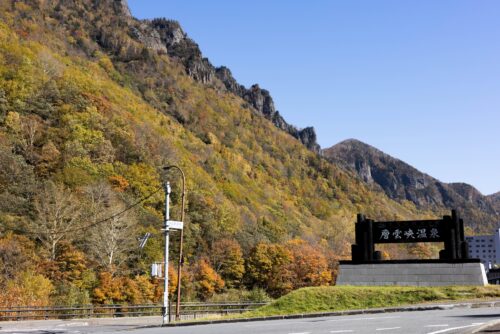
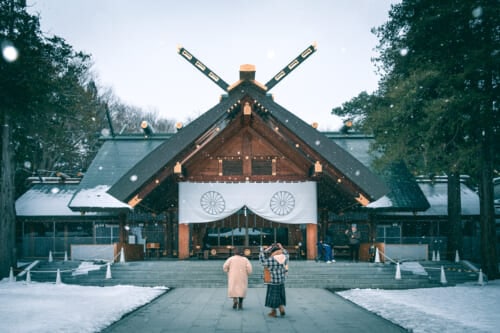
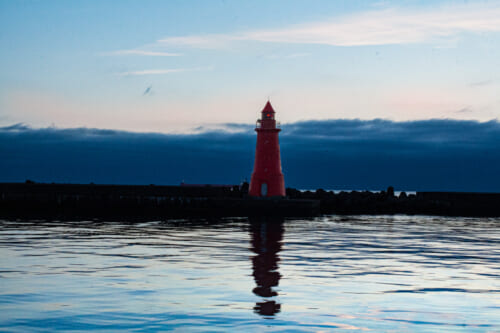
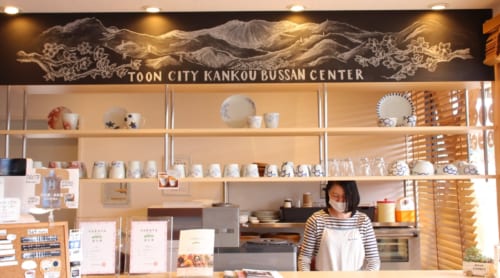
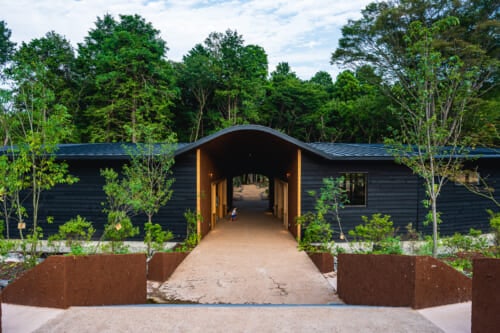
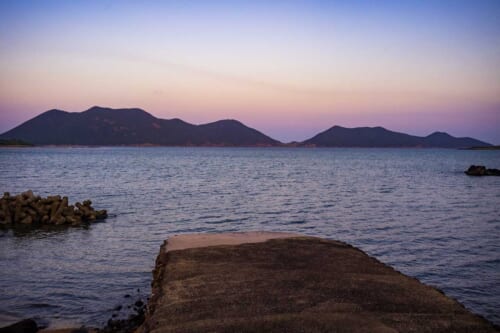
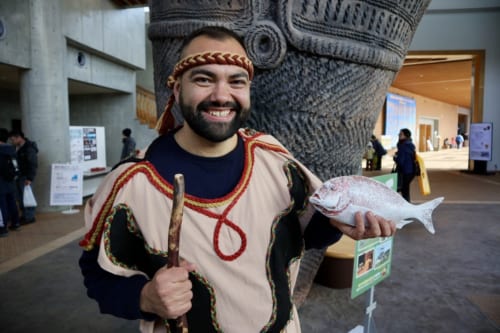
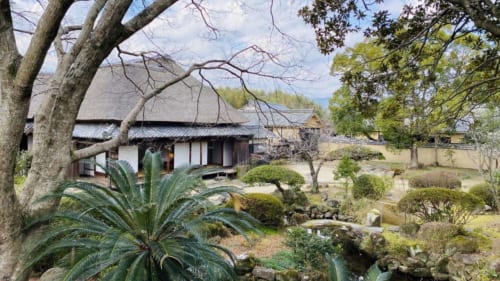

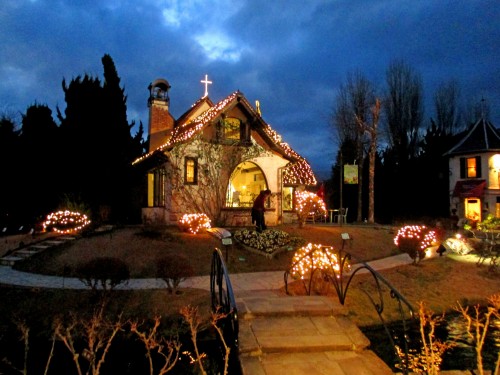


No Comments yet!